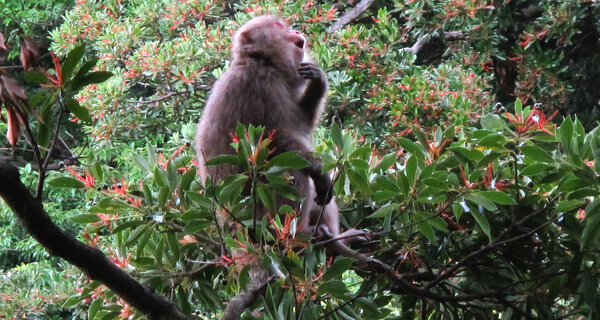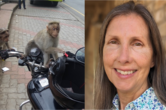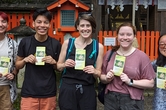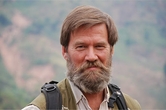Chewing on how macaques chew

[Editor's Note: Following is a guest article contributed by Tianmeng He, a doctoral students in the Section of Ecology & Conservation. To learn more about his research on the chewing behavior of Yakushima Japanese macaques, check out his recent publication here.]
You may only check the poops of your pets when they have accidentally consumed something they shouldn’t have eaten. For primate researchers, it is a bit different.
Monkeys’ poops can give us important information about their lifestyles. At the Kyoto University Primate Research Institute, my colleagues and I are especially interested in learning how monkeys interact with their resource environment through the act of chewing food. But there is an obvious problem: out in the field, we can't look inside a monkey's mouth while it is munching on food. So, we gather information on how chewing breaks down food items by taking a very close look at what comes out of the opposite end of the monkey's body.
We recently spent a year collecting Japanese macaques’ feces in Yakushima, an island in south Japan. It then took us several months to sieve those feces using a machine (pictured below), and to separate and measure the sizes of undigested food remains in monkey poops. Our fecal analysis yielded an unexpected result, and gave us a new insight into how the macaques chew their food...or rather, not chew their food as much as we had thought.
What can we learn about animals by sieving their feces?
Researchers have analyzed fecal particle sizes in cattle, sheep, and other livestock to find out whether they can easily digest certain types of food. That information is useful for improving forage to efficiently raise domestic animals. It may be counter-intuitive, but these studies have shown that food particles in feces are almost the same sizes as the chewed food bits before they get swallowed. In other words, the food bits change little in their sizes as they go through the digestive tracts of the animals. Thus, large fecal particles would suggest that the animal had difficulty chewing its food. Such difficulty could come from the toughness of the food, or it could be a result of bad (e.g., heavily worn) teeth. Regardless of the cause, under-chewed food likely impedes digestion because plant nutrients are less exposed in larger food particles.
More recently, researchers found the same technique to be also useful for understanding how wild animals chew and digest food. It provides a non-invasive way to examine the food that was chewed by animals—that is, without stealing food remains from their mouths or opening their stomachs.
During the fecal particle size analysis, we use water to flush feces through a series of sieves with different mesh sizes. The sieves are shaken by a machine to make particles go through them smoothly. In this way, particles of different sizes are collected in different sieves. [Photo credit: Tianmeng He]
Chewing behavior of Yakushima Japanese macaques, as told by their feces
Most of the studies to date on fecal particle sizes have focused on grass-eating species, such as cattle, sheep, horses, and baboons. Those studies found that food toughness and age-related tooth wear importantly affect the mechanical breakdown of food items by chewing, and hence, fecal particle sizes. However, the determinants of fecal particle sizes in species that eat other kinds of food are poorly known. For example, fruits and seeds, which are commonly consumed by many primates, may have very different effects on fecal particle sizes. Are the observations from grass-eating species applicable to species that eat from larger ‘menus’?
That is why our research group decided to look at particles in monkey’s feces. Of course, to confirm the factors that determine fecal particle sizes, checking feces is not enough. We also closely monitored the food preferences of those Japanese macaques in the wild and measured the toughness of their favorite food items that we had collected during year-long fieldwork.
Our finding on Japanese macaques was different from those of the previous studies on grass-eating species: The fecal particle sizes of Japanese macaques indeed varied among different months, but the toughness of food and age differences (which should imply different degrees of tooth wear) could not explain such differences. Surprisingly, the largest fecal particles (indicating least chewing) appeared in early summer, when the macaques spent all day enjoying one of their favorite food items—the fruits of Tabunoki (タブノキin Japanese; Machilus thunbergii).
Intact Tabunoki (タブノキ, Machilus thunbergii) fruits: For Japanese macaques in Yakushima, these are the dominant food in early summer, making up 80% of their diet (by weight) in June of 2018. [Photo credit: Tianmeng He]
In these fruits, the soft pulp is covered by a tough skin. The monkeys apparently do not bother to chew the fruits thoroughly as long as they get the nutrition in the soft pulp. As a result, the skins of the fruits survived the journeys through the monkeys’ digestive tracts and remained in their feces as large particles. It means that, in fruit-eating species, large fecal particle sizes do not always indicate increased difficulties in chewing and digestion. Instead, the physical structures of the food items and the chewing behavior of the consumer may be important factors that influence fecal particle sizes.
Remnants of Tabunoki fruits in monkey feces collected by our team. They do not seem to have caused difficulties in chewing or digestion. [Photo credit: Tianmeng He]
These findings also raise the question of whether large particle sizes always impede digestion. Our research team is going to examine this idea with food items other than forage for livestock. We hope these works will help other researchers to precisely apply fecal particle-size analysis in wild animals, and to better understand how food items are chewed and digested by the consumers.
Banner image: A female Japanese macaque eating fruits on a Tabunoki tree. She is touching her cheek to move the fruits inside her cheek pouch. [Photo credit: Tianmeng He]











